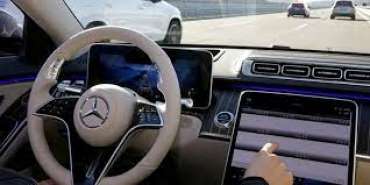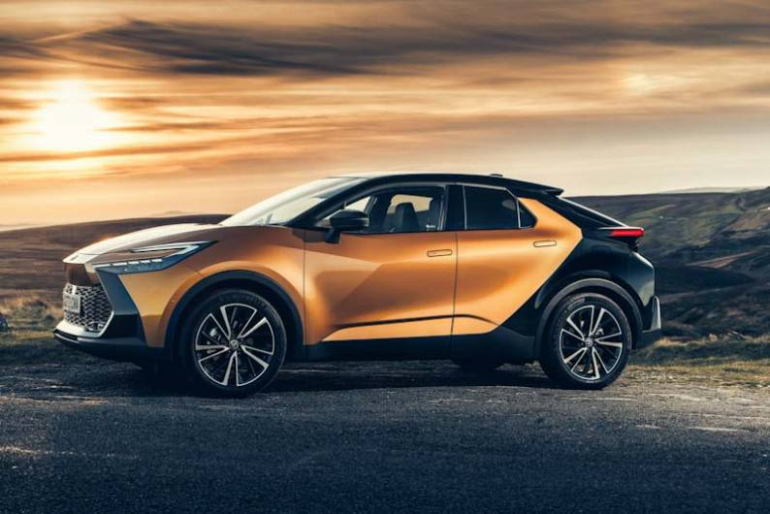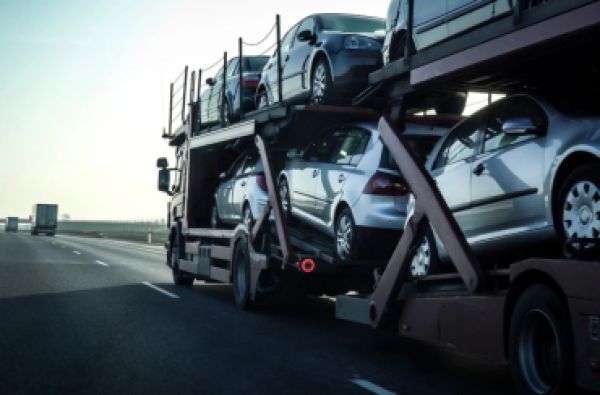Displaying items by tag: MercedesBenz Drive Pilot
Mercedes-Benz Drive Pilot First Drive: It Actually Drives Itself*
The future, when it arrived, was anticlimactic. The snow flurries had finally eased off and the traffic on the autobahn had at last slowed to less than 37 mph. White lights appeared on the metal buttons at 10-to-2 on the Mercedes-Benz S-Class' steering wheel. I thumbed one of them. Green now glowed on the wheel and in the display arcing around the top of the steering column. I took my hands and feet off the controls.
But not for long.

Now, before the Elon bros start sniggering and going all in on $TSLA, it should be pointed out that Drive Pilot's limitations are not due to the technology it employs but have been artificially imposed out of an abundance of caution on the part of both Mercedes-Benz engineers and the German government. Drive Pilot, which will be available on German-market S-Class models within the next few months, will only allow Level 3 autonomous operation on certain sections of the German autobahn network at speeds up to 37 mph, and only if certain weather conditions are met.
Though they won't comment on the record, the rolled eyes, half smiles, and shaking heads tell you exactly what the engineers in Stuttgart think of Tesla's so-called Full Self-Driving (FSD) system. Privately, they're astounded FSD Beta testing is even allowed on public roads. Getting Drive Pilot to meet Mercedes-Benz's own engineering and safety standards—not to mention those of the German authorities—has taken years of work in test labs and on the proving ground.
In addition to the parking sensors in the front and rear bumpers and the 360-degree cameras in the rearview mirrors that are fitted to regular S-Class models, Drive Pilot equipped cars have multimode radar units at each corner, a front-facing long-range radar and a LIDAR unit behind the grille, a stereo camera at the top of the windshield, a regular camera facing rearward through the backlight, and a moisture sensor in the front wheel well.

The car knows, to within a fraction of an inch, exactly where it is in terms of its absolute position, its relative position, and its position correlated to carefully measured landmarks thanks to a highly precise positioning antenna mounted in the roof. The data is so accurate it even accounts for the effects of continental drift, says test engineer Jochen Haab, and between one and three miles' worth is buffered into the Drive Pilot system at any one time.
The rear-facing camera is used to detect the flashing lights of emergency vehicles approaching from behind, although the "Hey, Mercedes" voice-activation microphone in the cabin will pick up the sound of the sirens even if the vehicle cannot be seen. If an emergency vehicle is detected, Drive Pilot will hand control back to the driver. Similarly, if the moisture detector, which measures the sound level of the spray from the tire on wet roads, determines the road is too wet—meaning rain and spray could interfere with the camera, radar and LIDAR—control will be handed back to the driver.
A quick recap: The Society of Automotive Engineers' standard SAE J3016 defines a vehicle's autonomous driving capability by way of levels, with Level 0 being no autonomous capability whatsoever to Level 5 being full autonomy, with the vehicle able to drive itself anywhere, in all conditions. We're already familiar with Level 1 and Level 2 autonomy, where the vehicle assists the driver thanks to technologies such as lane-keep assist and adaptive cruise control.
Level 3 is the bridge between Level 2, where the driver is supported by autonomous technology but is still in control of the vehicle, and Level 4, where the vehicle is always in full control. And here's the key point: In Level 3, the vehicle is in full control while in autonomous mode, until the moment the parameters under which it can no longer operate autonomously are met. At that moment, when the car requests it, the driver must take control.
"Level 3 is where it gets interesting," said David Cooke, senior associate director of the Ohio State University Center for Automotive Research, in a recent interview with Automotive News. "In Level 2 the human is always in charge. [In Level 3] the vehicle is in charge, until it's not."

The critical time lag between the vehicle ceasing to operate autonomously and the driver taking full control is the prime reason for the extreme caution in the rollout of Level 3 by both Mercedes-Benz and the German authorities. The rash of crashes in the U.S. involving distracted drivers in Teslas operating in Autopilot modes that purport to provide near-Level 3 autonomy has not gone unnoticed
No pricing for Drive Pilot has yet been announced, though Gregor Kugelmann says it will cost less than the $9500 Mercedes-Benz charges in Europe for the Hyperscreen option in the new EQS sedan. No one expects a high take rate: "We can give our customers the opportunity to hand over [control] to the vehicle when they are able to and give them some time back with autonomous driving capability," Kugelmann says. "But right now, there is no real business case."
That said, Kugelmann jokingly suggests Los Angeles provides the perfect use case scenario for the current iteration of Drive Pilot: "There's no rain, 12 hours of sunlight, and 10 hours of traffic jams!" But he's only half joking: Mercedes already has 10 Drive Pilot-equipped cars under test on L.A. 's crowded freeways. And based on my brief experience behind the wheel, Drive Pilot would be money well spent for anyone who regularly endures the peak-rush-hour grind around the city. You can genuinely catch up on emails or watch the news, or enjoy a latte while your S-Class deals with the mind-numbing chore of driving in a bumper-to-bumper crawl.
Drive Pilot is a first step towards much more highly autonomous Mercedes-Benz vehicles. The system will be upgraded to enable higher operating speeds and fully autonomous lane-change capability—under German law, to be allowed to operate at Level 3 above 37 mph, vehicles will have to be able to autonomously reach a 'safe haven' such as a breakdown lane in case of an emergency. Achieving that capability will require the addition of two rear-facing long-range radars.
While autonomous vehicle startups such as Waymo, Cruise, Zoox, and Aurora are convinced full autonomous capability can only be achieved by creating highly skilled and omniscient digital drivers, Mercedes-Benz sees it as the ultimate function of ever more sophisticated iterations of the advanced driver-assist systems it has already created. "Level 4 is technically possible for us in the second half of this decade," Gregor Kugelmann insists.











